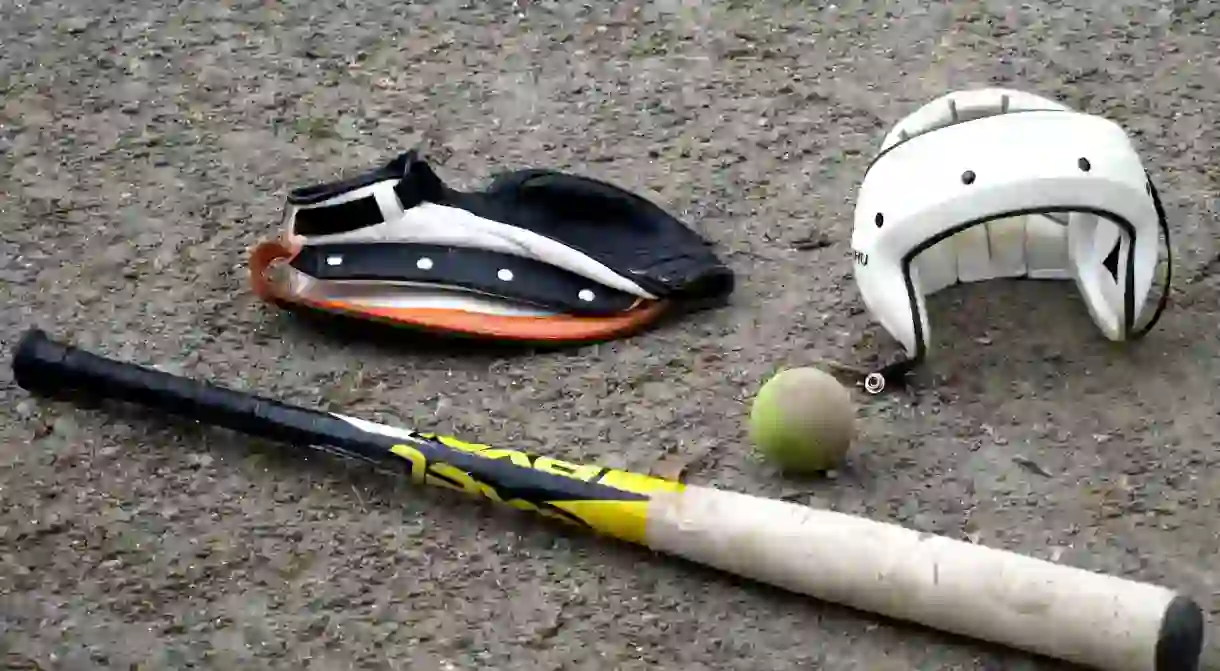Pesäpallo is Finland's Famous National Sport

Pesäpallo, the national sport of Finland, was born from the desire to carve a distinct national identity in the early days of the country’s statehood. It retains some strong similarities with baseball, while still bearing its own unmistakable identity. A favourite of men and women alike, pesäpallo is the sport of the whole Finnish nation.
Introduction to Pesäpallo
Lauri “Tahko” Pihkala is the man credited with inventing pesäpallo, also known as pesis, after the First World War. A game of bats and balls, pesäpallo involves two teams – batters and fielders – that compete over two periods of four innings each, during which each team bats and fields eight times. Just like baseball, batters have four bases they must advance through after hitting the ball to score. Unlike baseball, however, these bases are further apart, in a zigzag formation, making pesäpallo much more physically demanding than its American counterpart. The sport is now almost one hundred years old, having officially started in 1922, with the biggest event of the year being the annual “East vs. West” match, inaugurated ten years after the sport’s inception.
History of Pesäpallo
Tahko initially spread pesäpallo through Finland via schools, civil guards and sports clubs. In 1917, the country gained independence from Russia in accordance with the Treaty of Brest-Litovsk, which ended the First World War in Europe on the Eastern Front. Noting the fragility of Finland’s newfound statehood, Tahko recognised that sport could be a tool used for national unity, acquiring and securing independence, strengthening national defence, improving the nation’s physical health, as well helping build the character of the nation’s youth. He observed how sport could teach cooperation and responsibility, along with determination and independence, while also training individuals to become rational citizens of an organised society.

Pesäpallo and the Military
Contrary to a popular, longstanding myth, pesäpallo was not developed as a military exercise. In fact, Tahko merely proved himself to be an accomplished salesman, marketing the sport to the civil guards and army with combat training in mind. He linked the sport’s batting and advancing to firing and moving on the battlefield, the charging of the runners with infantry movements, and the ball toss with the throwing of a grenade. During the Finnish Civil War of 1918, this military dimension to Pesäpallo’s image contributed to its widespread adoption by combat-orientated organisations all over the country and secured its place as a stalwart of Finnish cultural identity.

How to Play Pesäpallo
Scores in a period are counted in runs, while the number of periods a team wins determines the match. If each team wins one period, a third period of one inning decides the game, going on to a special scoring contest, if necessary. Nine defensive fielders face off against an offensive batting team of twelve until they force three players out or one full round of batting order is completed without at least two runs being scored. The batter and the pitcher stand on opposite sides of a circular plate at the home base. The ball is thrown into the air by the pitcher, at least a meter above their own head, to be hit by the batter. Although the batter has three strikes to hit the ball, pesäpallo differs from baseball because the batter does not have to run if they hit the ball on the first two pitches.
Like baseball, a hit is ruled foul if it falls out of bounds and the batter is out if this happens on a third strike. Unlike baseball, however, pesäpallo has a back boundary which means batters cannot simply hit the ball as hard as they can – this adds a robust tactical dimension to the sport. Once a batter advances towards first base, they become a runner. Foul hits mean that the batter and the runners alike cannot advance. A runner is out if a fielder has the ball at a base before the runner gets there, otherwise they are safe. All runners who have tried to advance after a batter has struck the ball are out if the fielding team catches it.
https://www.youtube.com/watch?v=-lZZUdPC9mM
As in baseball, if a runner joins his teammate on a base, that teammate is forced to advance to the next base. A run is scored when a runner has returned to home base after advancing through all three field bases. Meanwhile, a home run in pesäpallo is achieved if a batter reaches third base on the back of their own hit; they can then score another run on a later play by advancing to the home base. In the case of a bad pitch, the batter may advance to the first base, provided there are no runners on the field, otherwise the batter may advance after receiving two consecutive bad pitches.













